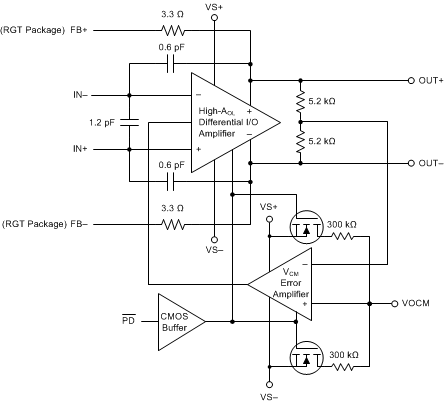JAJU878 November 2022 ADS117L11 , ADS127L11
- 概要
- リソース
- 特長
- アプリケーション
- 5
- 1System Description
- 2System Overview
- 3System Design Theory
- 4Hardware, Software, Testing, and Test Results
- 5Design and Documentation Support
- 6About the Author
2.3.2 THS4551
The THS4551 fully-differential amplifier offers an easy interface from single-ended sources to the differential output required by high-precision analog-to-digital converters (ADCs). Designed for exceptional DC accuracy, low noise, and robust capacitive load driving, this device is an excellent choice for data acquisition systems where high precision is required along with the best signal-to-noise ratio (SNR) and spurious-free dynamic range (SFDR) through the amplifier and ADC combination.
The THS4551 features the negative rail input required when interfacing a DC-coupled, ground-centered, source signal to a single-supply differential input ADC. Very low DC error and drift terms support the emerging 16- to 20-bit successive-approximation register (SAR) input requirements. A wide-range output common-mode control supports the ADC running from 1.8-V to 5-V supplies with ADC common-mode input requirements from 0.7 V to greater than 3.0 V.
 Figure 2-6 THS4551 Block Diagram
Figure 2-6 THS4551 Block Diagram